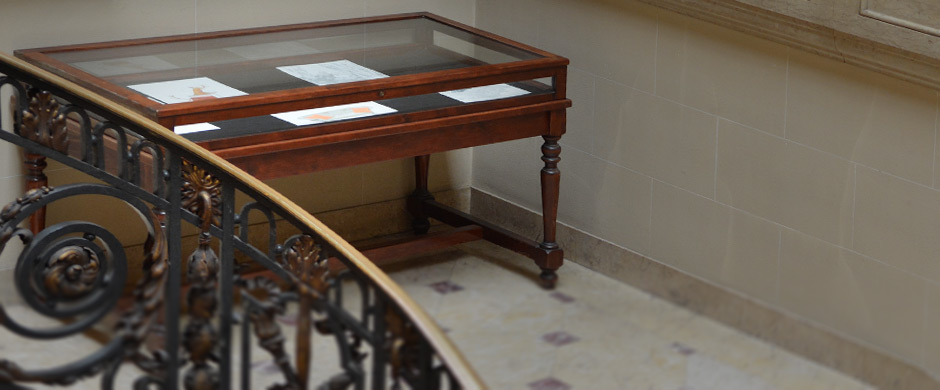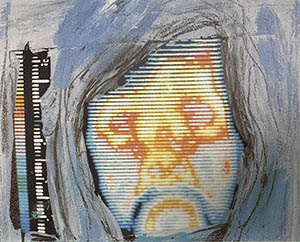 | On Display
| On Display

Display Cases in the Great Hall: Exhibition Archive
RADIATION MAPS
20 July to 30 September, 2018
Lithographs by HISAO HANAFUSA
 Hisao Hanafusa believes that “all humans have uchuiden or ‘universal memory’ and in his work he explores that concept. When Hanafusa was seven years old, nuclear bombs were dropped on Hiroshima and Nagasaki in his native Japan. Radiation ruined the lives of many in the days and weeks that followed, and those events seared a universal memory into all generations thereafter. When Hanafusa arrived in the U.S. in 1964, he applied his bold philosophical approach to shape his art work, both on the surface, and within.
Hisao Hanafusa believes that “all humans have uchuiden or ‘universal memory’ and in his work he explores that concept. When Hanafusa was seven years old, nuclear bombs were dropped on Hiroshima and Nagasaki in his native Japan. Radiation ruined the lives of many in the days and weeks that followed, and those events seared a universal memory into all generations thereafter. When Hanafusa arrived in the U.S. in 1964, he applied his bold philosophical approach to shape his art work, both on the surface, and within.
Thermography, or infrared thermographic imaging, was first developed as a proprietary tool for the military in the late 1940s. Infrared line scanners were first used to detect radiation and heat from within hidden places, or measure radiation emitting from a radioactive site, or to quantify the heat from bodies not seen by the naked eye.
Hanafusa collaborated with a friend in 1983 who was testing a new thermographic heat imaging for the U.S. military. He applied this technology to create his art form to “see” different levels of heat radiation with different colors. He took the line scans made of his own body and those of his children to create a series of lithographs visualizing the body’s invisible emissions of radiation and heat.
Lithographs on display here are thermographic line scans of Hanafusa’s own head and the whole-body profile of his young son. Areas of persimmon orange around the eyes are most intense, while areas of blue show the least heat, where hair, or beard and mustache, covered the skin. The quiet body of his son has a mummy-like pose, feet pointed forward, head slightly turned toward the viewer, and his hands and chest read warmer than the rest of the body. The studies form abstract maps of heat emanating from active parts of the body: eyes, hands, and heart.
Medical science now applies this technique to observe areas of hidden activity, to visualize and quantify the growth of invisible tumors. Hanafusa used the technology as an art medium to explore and understand the nature of our universal human existence, bringing together philosophy, art and science.
Curated by Lisa A. Banner
Contact the Institute
Building Hours
Contact Information
If you wish to receive information on our upcoming events, please subscribe to our mailing list.



